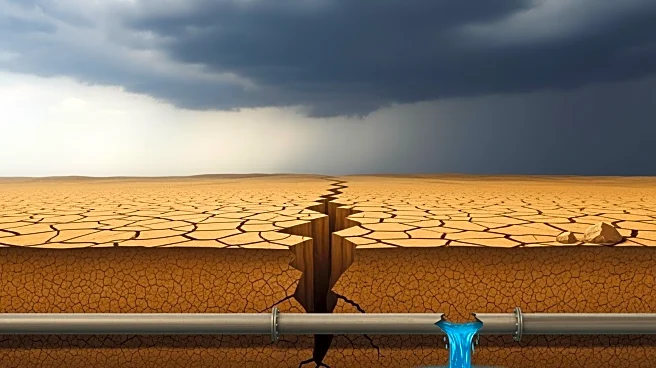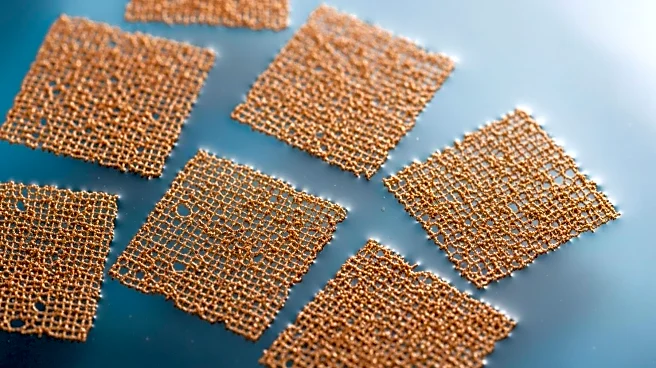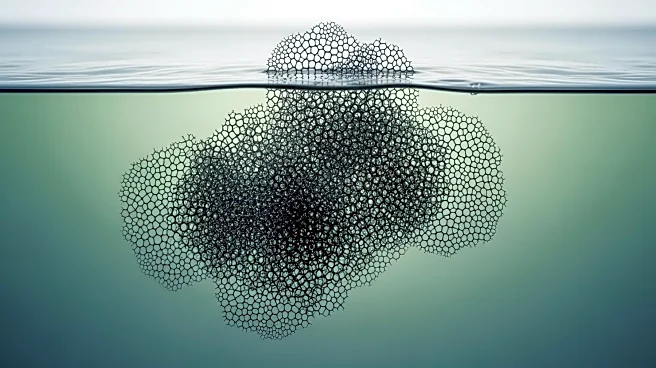What's Happening?
Researchers have developed graphene oxide-like carbon nanosheets derived from onion peel to effectively remove ciprofloxacin, an antibiotic, from water. The study highlights the nanosheets' ability to adsorb
ciprofloxacin through hydrogen bonding and π-π interactions, achieving a removal efficiency of up to 90% at optimal pH levels. The nanosheets exhibit a layered structure similar to graphene oxide, with enhanced surface area and active sites for adsorption. This innovative approach utilizes waste materials to create sustainable solutions for water purification.
Why It's Important?
The development of bio-based nanosheets for water purification addresses the growing concern of pharmaceutical contamination in water sources. By utilizing waste materials like onion peel, this method offers an environmentally friendly and cost-effective solution for removing harmful substances from water. The successful removal of ciprofloxacin demonstrates the potential of these nanosheets to tackle other contaminants, contributing to improved water quality and public health. This research aligns with global efforts to develop sustainable technologies for environmental protection.
What's Next?
Further research may explore the application of these nanosheets for removing other contaminants from water, potentially expanding their use in industrial and municipal water treatment processes. The scalability and commercial viability of this technology could be assessed, paving the way for widespread adoption. Additionally, ongoing studies may focus on optimizing the synthesis process to enhance the efficiency and durability of the nanosheets.
Beyond the Headlines
The use of waste materials for creating advanced purification technologies highlights the intersection of environmental sustainability and technological innovation. This approach not only addresses pollution but also promotes waste valorization, contributing to circular economy principles. The ethical implications of using natural resources for technological advancements may be explored, considering the balance between resource utilization and environmental conservation.












